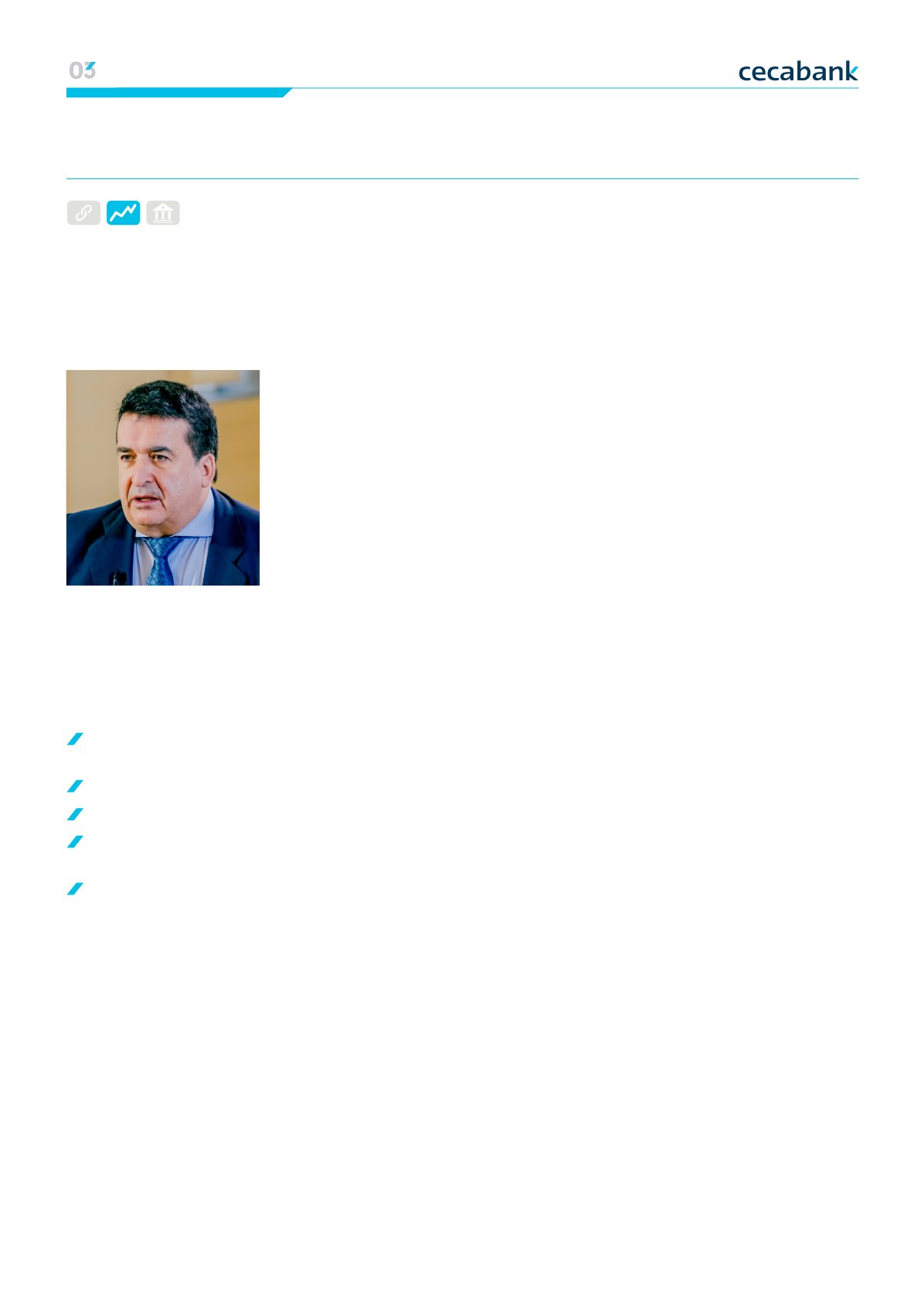

51
Annual Report 2014 Our Business ModelHow did the Financial Division
perform in 2014 and what were
its main milestones?
Consolidation of the
traditional market.
Rating upgrade.
New clients.
Debt market making and
treasury support.
And, of course, beating the
budgeted target.
In terms of performance, 2014 was
a fairly good year for Cecabank’s
trading room. The income
obtained, net of expenses, was
107.62 percent over the targets we
budgeted for in December 2013, so
we can consider we had a strong
year. This good performance was
based on our getting our portfolio
positioning right, particularly in
fixed-income assets, and growing
transaction volumes generated by
our client portfolio, including both
direct clients and those generated
by cross-selling. Our achieving a
good transaction price, together
with good pre-sale and post-sale
service has meant that trading
volumes have grown significantly
over the course of the year.
Do you think that this
performance can be sustained in
post-crisis markets?
It is true that the crisis has been
beneficial for our institution, all
the more so considering that our
institution has been one of the
winners emerging from the crisis
strengthened. To keep ourselves
in this position our institution has
been able to transform itself into
an agile and flexible organisation
in all respects. We have reduced
our expenses, improved efficiency
and, more importantly, we have
changed our business model,
turning ourselves into a market
benchmark. Cecabank’s income
is now much more diverse than it
was ten years ago and its capacity
for action is much greater. We
have grown in all respects, with
prudence, and with a clear idea
of our strategy. Cecabank is a
reality, it is successful, and it has
huge potential.
The current climate is significantly
more complex than that we faced
at the start of 2014. Numerous
significant events have occurred
during the year, leading most
central banks to set their
intervention rates at minima, or
even negative in some cases, such
as in Switzerland or Denmark. This
is uncharted territory which is
going to cause serious profitability
problems for both investment and
pension funds and its effects on
the global economy are as yet
unknown. These shifts are the
outcome of the currency wars
being waged to gain market share
and they make it much harder for
banks with a profile like ours to
turn a profit.
How do regulatory changes affect
the Financial Division’s business?
Treasury’s budget presents the
challenge of client diversification.
Liquidity is of course an extremely
important aspect, but we
have to optimise. It is worth
recalling that interest rates
are currently negative and an
excessively prudent approach
to liquidity represents a cost for
the institution. In 2014 we also
designed and approved our new
Risk Tolerance Framework, which
clearly sets out our limits, current
and future rations, and, in short,
our risk appetite.
José Manuel Villaverde Parrado, Financial Division Director
Treasury management
00 Strategic lines |Economic and regulatory context | Strengthening our model
|
Business lines 01 Financial information|
Profit & loss | Activity|
Capital base | Ratings 02 Risk management | The Cecabank risk function


















